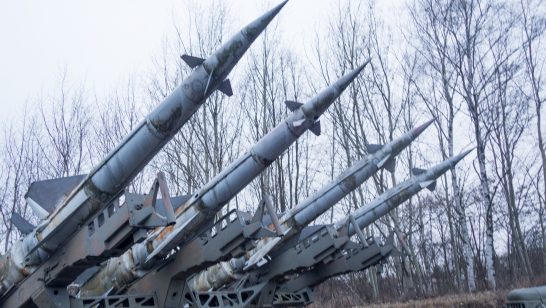
This report seeks to inform public debate about the proliferation of cruise missiles and their strategic implications. It provides a detailed discussion of the technology behind cruise missiles, analyses how the proliferation of cruise missiles has proceeded and considers the strategic implications of cruise-missile proliferation on the European continent. The paper also outlines several policy recommendations intended to curtail the proliferation of cruise missiles and mitigate their adverse strategic consequences.
A proactive attitude is required in order to counter the negative strategic implications of cruise missile proliferation and to reverse the dangerous proliferation trends outlined in this report. Fabian Hoffmann
The report concludes that:
- Over the decades, dozens of cruise-missile systems have come into existence, using a large variety and blend of subsystems. This makes it difficult to provide a general definition of the term ‘cruise missile,’ a fact that may be particularly problematic in the context of potential arms control agreements.
- Several trends with regard to cruise-missile technology are discernible: for the near future, liquid-fuel turbojet and turbofan engines will likely remain the dominant propulsion systems used in cruise missiles. The increased adoption of solid-fuel ramjets is a possibility. Improved guidance, especially the large-scale adoption of two-way datalinks will allow cruise missiles to fly more complex missions, including swarm attacks. In addition, the increased adoption of multi-effect warheads will render cruise missiles more destructive.
- The proliferation of cruise missiles has progressed significantly. Today, dozens of states are in possession of advanced cruise-missile capabilities, including both anti-ship and land-attack cruise missiles. In addition, nuclear-capable cruise missiles have proliferated significantly, a trend that can be expected to continue in the future.
- The proliferation of cruise missiles has far-reaching strategic implications. While providing certain benefits, the proliferation of cruise missiles also comes with significant strategic drawbacks. Especially in a strained regional context, the proliferation of cruise missiles has the potential to undermine conventional and nuclear crisis stability.
- A proactive attitude is required in order to counter the negative strategic implications of cruise missile proliferation and to reverse the dangerous proliferation trends outlined in this report. In this regard, the international community should pursue a short-term agenda of establishing confidence and transparency-building measures surrounding the deployment and use of cruise missiles, while focusing on comprehensive and verifiable arms control agreements in the long-term.
The opinions articulated above represent the views of the author(s), and do not necessarily reflect the position of the European Leadership Network or any of its members. The ELN’s aim is to encourage debates that will help develop Europe’s capacity to address the pressing foreign, defence, and security policy challenges of our time.
Image: Flickr, Kelly Michals



